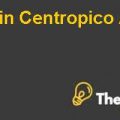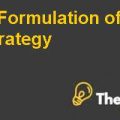Political Economy in Europe Case Study Analysis
In addition to this, the agricultural intervention reflected the broadconsensus related to the particular characteristics of the sector, as the sector was heavily reliant on the geography and climate, and was highly prone to the imbalance of the systems between demand and supply, and thus led to the substantial fluctuations in incomes as well as prices. Due to an inelastic demand for food, unchangeable nature of the inputs and the length of the cycle of production demonstrate that the farmers tend to have scant control over the international supply of the farm produce. Under these type of the conditions, the price would be lowered as a consequence of an increase in the supply, whereas the reduction in supply would increase the price. Combining all these factors tend to create an instability in the market. In order to better deal with the situation; the government is keen to support the farmers’ income and regulate agricultural markets, a tendency inherited by the Common Agricultural Policy.
Part B
Since the ultimateobjectiveand purpose of the CAP is to stabilize the market, increase the agricultural productivity, encourage the fair standard of living for those working for agriculture and to ensure affordable price to customer; these objectives could be accomplished through guaranteed minimum price for the farmers of EEC. Much of the EEC achieved on the economic front should be based on encouraging free trade and competition; whereas on the agricultural front, it pursued policy of restricting the imports from other countries, promoting general welfare of people as well as protecting the economic sector from the competitive forces through import quotas, subsidies, tariffs or other restrictions on the handicaps, which are placed on the imports from the international competitors. The policies aim at encouraging the local manufacturers and providing them with more and more growth opportunities, until and unless they tend to compete against more experienced and competent companies in the international market arena and reduce the level of imports as it tends to allow the country to improve the balance of trade.
The aspects of the CAP opposed the competition policy of the EU in a way that the CAP favored the policies of interventionist, which is aimed at correcting the market failures and promoting the economic fairness.Another policy is the protectionism of economy, which is aimed at restricting the imports from the other nations, which do not align with the competition policy of EU,tending to prevent the lack of open and free competition in the market. In other words, the competition policy of EU between the members are not alignedwith the ultimate objective of CAP of restricting competition with the international country and neither does it support it.Through protecting the local manufacturers from the high imports; the CAP runs counter to the competition policy of the EU, which calls for the competition and rivalry between the countries.
Part C
The rationale behind the reduction in the CAP expenditure in the total EU expenditure over the years, includes: growing share of other EU policies and CAP reform. The EU reformed the CAP, which significantly improved the balance between the demand and supply of the agricultural products, enhanced the competition of EU’s agriculture and reducedexpenditures on the agriculture. The EU introducedavariety of measures on the safety and quality of food, welfare and animal health, entrepreneurship and environment as well as rural development policy. Not only this, the reforms had also reduced the incentive for over manufacturing in a way that they moved the CAP towards the direct payment system on the basis of the historical production. As a consequence of this, it helped to decouple the agricultural subsidies from the existing production as wells as curbs the overproduction.
As such, there are variousprinciplesof CAP that include cross complianceas well as decoupling,which have significantly reformed the first as well as second pillars of the CAP.The first pillar of the CAP aims at the development of rural area and support them in developing the zones, with the provision of economic opportunities and improving the economic wellbeing of the people and quality of life in rural areas. On the other hand, one of the important pillars of CAP is its agricultural environment measures,which are supposed to encourage the farmers to enhance and protect the environment on their farmland. In addition to this, the cross-compliance has made the agricultural subsidies to farmers, depending upon their compliance with number of standards. So, the reforms made by EU on the CAP were quite effective and the consequences were in favor of the farmers as well as the agricultural sector, as a whole................................
This is just a sample partical work. Please place the order on the website to get your own originally done case solution.











